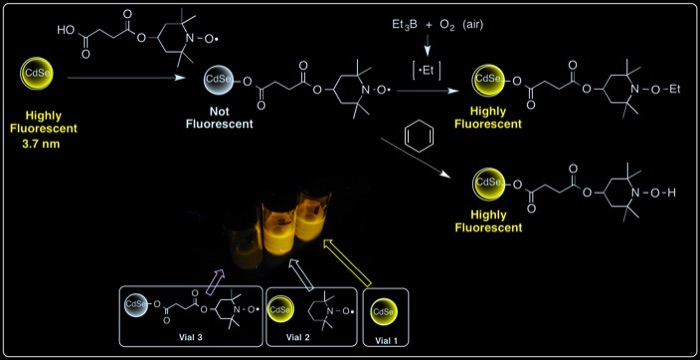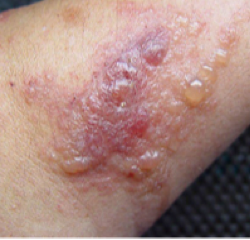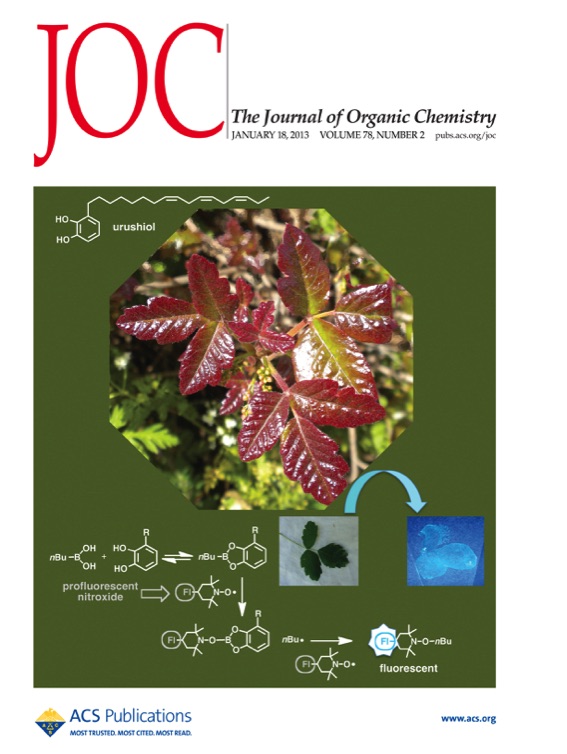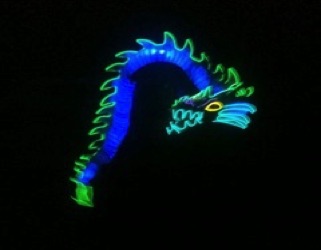Nitroxides as Fluorescence Quenchers
The synthesis and applications of profluorescent nitroxides is a major field of focus.
Profluorescent nitroxides quench fluorescence of closely tethered fluorophores:
• Nitroxides ligated to “Quantum Dots”
Using our thiol or disulfide functionalized alkoxyamines, we have collaborated with our UCSC colleagues Prof. Jin Zhang and Prof. Shaowei Chen in anchoring our initiators onto CdSe and Ag nanoparticles. An obvious extension is the exploration of the ability of nitroxides to quench highly fluorescent CdSe nanoparticles (also known as “quantum dots”). We explored the ability of a variety of carboxylate and amine groups to act as effective ligands to bind to the CdSe surface. By fluorescence, we have found that 4-amino-TEMPO (also explored by the Scaiano group) is the most effective quencher. By EPR (in collaboration with Prof. Glenn Millhauser here at UCSC), we have found that the bidentate bisamine shows the tightest binding to the CdSe nanoparticles. We have demonstrated restoration of fluorescence upon trapping the nitroxide moiety with ethyl radical to form alkoxyamine: C. Tansakul, E. Lilie, E. D. Walter, F. Rivera III, A. Wolcott, J. Z. Zhang, G. L. Millhauser, R. Braslau* “Distance-dependent Fluorescence Quenching and Binding of CdSe Quantum Dots by Functionalized Nitroxide Radicals,” J. Phys. Chem. C, 2010, 114, 7793-7805.
Contact with poison oak, poison ivy or poison sumac elicits contact dermatitis in about 70% of the population. Avoidance of the invisible oil is the best way to prevent the annoying and in some cases medically incapacitating immunoresponse. The Braslau group is working on a method to detect the active component urushiol using profluorescent nitroxides. R. Braslau,* F. Rivera, III, E. Lilie, and M. Cottman “Urushiol Detection using a Profluorescent Nitroxide,” J. Org. Chem. 2013, 78, 238-245. doi: \10.1021/jo301135m.We have filed several patents, and hope to commercialize this spray in the future.
Contact Dermatitis from Poison Oak
• Nitroxides Bonded to Fluorescent Species
• Profluorescent Nitroxides as Sensors
1. Detection of Urushiol from Poison Oak/Ivy/Sumac
2. Thermally sensitive profluorescent nitroxides
fluorescence is restored upon reaction of the nitroxide, typically to from the alkoxyamine or hydroxylamine. Profluorescent nitroxides have been studied for about 25 years by a number of research groups.




Western Poison Oak

The use of thermally unstable α-hydrogen nitroxides related to TIPNO are being developed as fluorescent indicators of exposure to temperatures over a critical limit.
We are currently optimizing the choice of fluorophore, and developing new profluorescent nitroxides.

